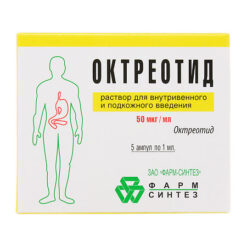No products in the cart.
Omez Insta, 20 mg 5 pcs.
€1.00
Out of stock
(E-mail when Stock is available)
EAN: 8901148225640
SKU: 222983
Categories: Medicine, Stomach, intestines, liver, Ulcer and gastritis
Description
GI infections caused by Helicobacter pylori, Reflux esophagitis, Gastric and 12 duodenal ulcer, Nausea, Pain in the epigastric region, Sour belching, Heartburn Adults
- nonerosive and erosive (reflux esophagitis) forms of GERD;
- Helicobacter pylori eradication in infected patients with gastric and duodenal ulcer (as part of combination therapy);
- prevention and treatment of gastric and duodenal mucosal damage caused by taking non-steroidal anti-inflammatory drugs (NSAID-gastropathy): dyspepsia, mucosal erosions, peptic ulcer;
- hypersecretory conditions (Zollinger-Ellison syndrome, stress ulcers of the gastrointestinal tract, polyendocrine adenomatosis, systemic mastocytosis).
Children
Over 2 years of age and body weight more than 20 kg: in therapy of gastroesophageal reflux disease;
Over 4 years of age and body weight more than 20 kg: in therapy of duodenal ulcer caused by Helicobacter pylori.
Safety and efficacy in other indications in pediatric patients has not been established.
Active ingredient
Active ingredient
How to take, the dosage
How to take, the dosage
Interaction
Interaction
Gastric acidity decreased by treatment with omeprazole may decrease or increase absorption of other drugs whose absorption mechanism depends on the pH of the gastric juice.
Decreases absorption of ketoconazole and itraconazole.
Induces absorption of digoxin. Concomitant use of omeprazole at a dose of 20 mg once daily and digoxin increases the bioavailability of digoxin by about 10%.
Omeprazole has been shown to interact with some antiretroviral drugs. The mechanisms and clinical significance of these interactions are not always known. Increased gastric pH on omeprazole therapy may affect absorption of antiretroviral drugs.
An interaction at the level of CYP2C19 is also possible. When omeprazole is coadministered with antiretroviral drugs such as atazanavir and nelfinavir, serum concentrations decrease with omeprazole therapy. In this regard, co-administration of omeprazole with antiretroviral drugs such as atazanavir and nelfinavir is not recommended.
In concomitant use of omeprazole and saquinavir an increase in serum concentration of saquinavir has been noted.
Omeprazole inhibits CYP2C19, the main isoenzyme involved in its metabolism.
The co-administration of omeprazole with other drugs in whose metabolism CYP2C19 is involved, such as diazepam, phenytoin, warfarin, other vitamin K antagonists and cilostazol, may decrease the metabolism of these drugs.
Phenytoin plasma concentrations should be monitored during concomitant use of phenytoin and omeprazole; in some cases, phenytoin doses may need to be reduced. At the same time, in patients taking phenytoin for a long time, concomitant use of omeprazole in dose of 20 mg once daily did not cause changes in phenytoin plasma concentrations.
When using omeprazole in patients receiving warfarin or other vitamin K antagonists, INR control is necessary; in some cases it may be necessary to reduce the dose of warfarin or other vitamin K antagonist. At the same time, in patients taking warfarin for a long time, co-administration of omeprazole at a dose of 20 mg once daily did not cause changes in clotting time.
The use of omeprazole in a dose of 40 mg once daily led to an increase in Cmax and AUC of cilostazol by 18 and 26%, respectively; for one of the active metabolites of cilostazol the increase was 29 and 69%, respectively.
Omeprazole does not affect the metabolism of drugs that are metabolized by CYP3A4, such as cyclosporine, lidocaine, quinidine, estradiol, erythromycin and budesonide.
In concomitant use of omeprazole and tacrolimus, increased serum concentrations of tacrolimus have been noted.
The metabolism of omeprazole involves CYP2C19 and CYP3A4. Concomitant use of omeprazole and CYP2C19 and CYP3A4 inhibitors such as clarithromycin and voriconazole may lead to increased plasma concentrations of omeprazole due to delayed metabolism of omeprazole. Co-administration of voriconazole and omeprazole more than doubled the AUC of omeprazole, but did not require dose adjustments of omeprazole.
Like drugs that induce CYP2C19 and CYP3A4, such as rifampicin and preparations of St. John’s wort, when used together with omeprazole may lead to decreased plasma concentrations of omeprazole due to accelerated metabolism of omeprazole.
Special Instructions
Special Instructions
Contraindications
Contraindications
Side effects
Side effects
Blood organs: rare – leukopenia, thrombocytopenia; very rare – agranulocytosis, pancytopenia.
Digestive system: frequently – diarrhea or constipation, abdominal pain, nausea, vomiting, flatulence; rarely – increase of liver enzymes activity, taste disorders; very rarely – dry mouth, stomatitis, candidiasis of mucous membrane of gastrointestinal tract; in patients with previous severe liver disease – hepatitis (including jaundice).with jaundice; very rarely – liver failure, including with the development of encephalopathy (in patients with liver disease in anamnesis).
Nervous system disorders: frequently – headache; infrequently – dizziness, paresthesia, somnolence; rarely – taste disorders.
Mental disorders: infrequent – insomnia; rare – agitation, confusion, depression; very rare – aggression, hallucinations.
Sensory system disorders: infrequent vertigo; rarely – blurred vision.
Musculoskeletal system: rare – arthralgia, myalgia; very rare – muscle weakness.
The skin: infrequent dermatitis, itching, rash, urticaria, rarely alopecia, photosensitization; very rare – erythema multiforme, Stevens-Johnson syndrome, toxic epidermal necrolysis.
Allergic reactions: rare – hypersensitivity reactions, including fever, angioedema and anaphylactic reactions (including anaphylactic shock).
Hyrogenital and reproductive system disorders: rare – interstitial nephritis; very rare – gynecomastia.
Metabolic disorders: rare – hyponatremia; very rare – hypomagnesemia.
Others: infrequent – malaise, peripheral edema; rarely – bronchospasm, increased sweating.
Overdose
Overdose
Symptoms: headache, dizziness, lethargy, confusion, tachycardia, arrhythmia, blurred vision, drowsiness, dry mouth, nausea, vomiting, flatulence.
Treatment: symptomatic. If necessary – gastric lavage, activated charcoal. Hemodialysis is not sufficiently effective.
Pregnancy use
Pregnancy use
Similarities
Similarities
Additional information
| Shelf life | 2 years |
|---|---|
| Conditions of storage | At the temperature not more than 25 ° C. Keep out of reach of children! |
| Manufacturer | Dr. Reddy's, India |
| Medication form | Powder for oral suspension |
| Brand | Dr. Reddy's |
Related products
Buy Omez Insta, 20 mg 5 pcs. with delivery to USA, UK, Europe and over 120 other countries.










